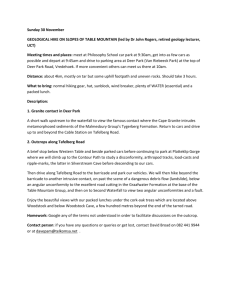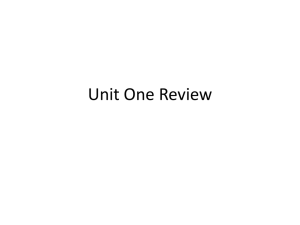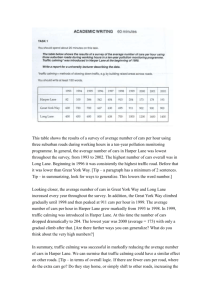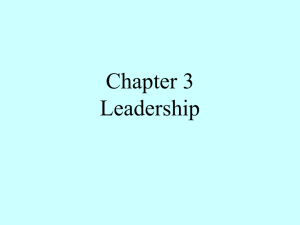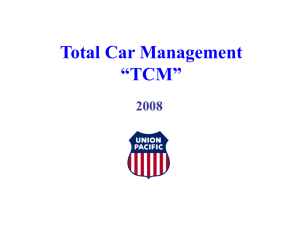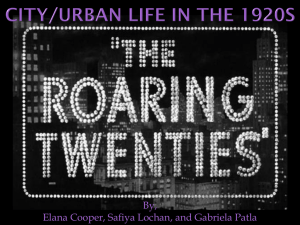Using Data to Inform Instruction
advertisement
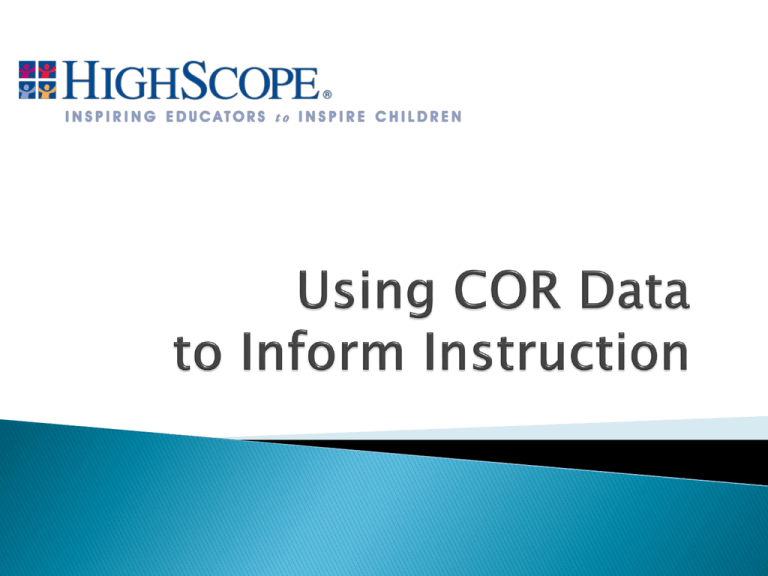
Participants will be able to: Interpret data generated from the Child Observation Record. 2 In terms of curriculum: How are we doing? How do we know? What do we need to know about our programs/sites/classrooms to insure we are meeting our curriculum goals? 3 Teaching Cycle Data Results 4 Planning Assessment, Reflection (Curriculum Goals) Teaching Practice 5 Planning Assessment, Reflection (Curriculum Goals) Teaching Practice Step 1 - Understand what the data is reporting. Step 2 - Understand what your data says. Step 3 - Make sense of what the data indicates based on what you know about your own classroom and children. Step 4 - Ask yourself, does the data suggest any new questions? 6 Bluebird Classroom Report is about? Data says? Does this make sense? New questions? Assessment, Reflection Planning (Curriculum Goals) Teaching Practice What actions can we take to support this classroom? 8 What content areas are our strengths? How do we know? What are our weak areas? How do we know? Are children learning? How do we know? Are we reaching all of our children? 9 1. Summarize your assigned report on page X of your training booklet 2. Choose a spokesperson to share your group’s ideas for using this data to inform teaching practices. 10 Assessment, Reflection Planning (Curriculum Goals) Teaching Practice We can also use our classroom data to inform our teaching practice when working with groups of children or small groups of children. 11 Scaffolding is a strategy that we can use to make one activity (small group activity for example) a meaningful experience for all of the children, regardless of their developmental level. 12 Both ◦ Support children’s individual levels of development (or where they currently are) And ◦ Provide extensions as they move to the next developmental stage 13 Earlier Middle Later 14 15 Next we will look at an example of a small group activity that uses scaffolding. The teacher wants to use small cars and planks to support children using position and direction words and learning more about rates of movement. Earlier Middle Later 16 Working with Cars and Planks: Earlier Example Things children might do or say at this stage: • Move the car around the floor. • Say, “Brrrroom” while make a car go back and forth on the floor. • Line the cars up on a plank. To support current levels: To offer an extension: 17 Working with Cars and Planks: Middle Example Things children might do or say at this stage: • Say, “The cars work best on the boards. They don’t like the carpet.” • Place their board on a block to make a ramp and send their car rolling down it. Say to another child, “Let’s have a race.” To support current levels: To offer an extension: 18 Working with Cars and Planks: Later Example Things children might do or say at this stage: • Experiment with making bridges by adding blocks to both sides and a long plank across. • Make a ramp several blocks tall and say, “When it’s high like this, the car goes far – almost to Joey’s foot!” To support current levels: To offer an extension: 19 1. As a table group, interpret the report on p. X of your training booklet. 2. Create a plan for using this information to support and improve teaching practices. 20 21




